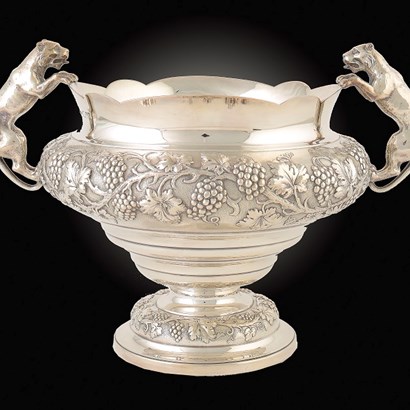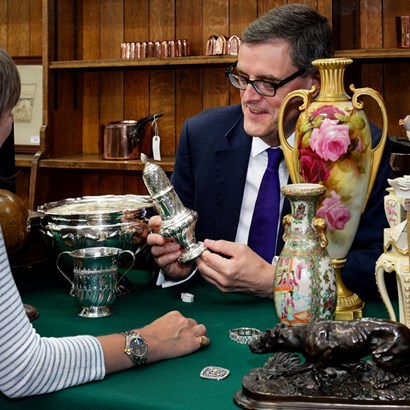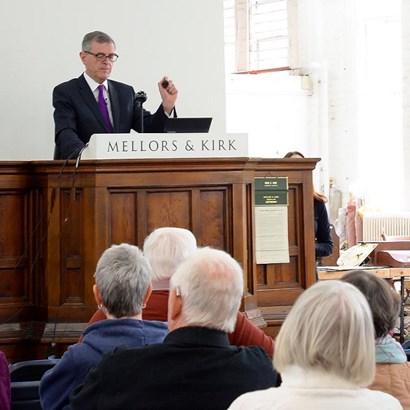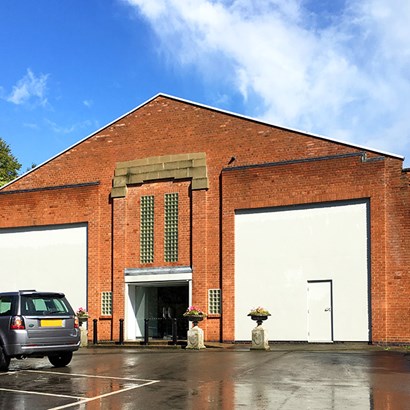Auction Insights
Indian Model of a Bungalow
A small but desirable residence that was fit for an Empress has a poignant history.
In little more than the time from sunrise to sunset a small mining community celebrated the most joyous day anyone could remember but a few hours later was plunged into the deepest grief when nearly 100 men died in a double tragedy underground.
All this was far from the mind of everyone on that bright spring afternoon when the royal train steamed into Doncaster station. On board King George V and Queen Mary were eager to, it was reported, “acquaint themselves with the lives, work and homes of their industrial citizens.”
An amazing and mysterious object that turned up at The Auction House last week has a history which I have deduced is so extraordinary as to link the heat and dust of British India, at that time the ‘Jewel in the Crown’ of the Empire, with the bereft citizens of the mining village of Cadeby, near Doncaster. It also throws a light on an aspect of Queen Mary’s nature that seems sharply at odds with her posthumous reputation. These thoughts stem from a bizarrely painted presentation inscription on the roof of the wooden model of a somewhat fancy Indian bungalow “Durbar December 1911 A gift to our gracious empress from your loyal subjects ‘The children of Delhi’.
Royal memorabilia is one thing but that of an Empress is quite another. The little bungalow was clearly made with pride and devotion but would have been just one of a vast number of presents with which the royal couple were showered during the events of the Delhi Durbar in 1911. The last of the three and the only Durbar to be attended by a monarch, it was a magnificent spectacle when all the native princes of India paid homage to George V and Queen Mary, both of whom were in full coronation robes, regal crowns and enthroned on a huge dais despite the heat. The event itself was held on 12 December in the middle of a 10 day period of great pomp and splendour.
By February the King and Queen had arrived home and were no doubt looking forward to the then modern concept for royalty of a walkabout amongst their ordinary, ‘salt of the earth’ subjects, the hardworking men and their families of the South Yorkshire coalfield. On July 8th, 1912 through crowded streets of bunting and flag waving, the royal limousine stopped at the 12th century Conisborough Castle where the King and Queen had tea after being greeted by a crowd estimated at 30,000. They spent the night as guests of Earl Fitzwilliam at the palatial Wentworth Woodhouse, the largest private residence in the country. Over breakfast the following day the King was informed of the Cadeby pit disaster.
An underground explosion had killed 35 men (three died later of their injuries) during the night shift. The Times reported that the number would have greater but for the royal celebrations the day before. A few hours later another explosion claimed the lives of a further 53 men of the rescue party, including the government’s Chief Inspector of Mines and the colliery manager. The King decided to stick to his itinerary, which included his becoming the first sovereign to enter a coalmine. At the pithead he descended 350 yards into Elsecar colliery and spent the best part of an hour underground in a singular act of solidarity and sympathy which took on a far greater significance than originally envisaged.
At around 7pm the King and Queen made an unscheduled low key visit to Cadeby. There Queen Mary was seen to be moved to tears and the King was also visibly moved at the plight of the community.
Given where it turned up 60 years later, it seems that Queen Mary must have considered the gift of her Indian ‘dolls house’ would be a source of comfort to some afflicted young family in Cadeby and one which would be well received. The High Sheriff, who organised the visit was Charles Thellusson of Brodsworth Hall and he is the person most likely to have been ordered by the Queen to select who was to receive the royal gift.
The model bungalow was sold at auction in a small sale in the Cadeby area in the ‘80s long before the days of online or even telephone bidding.
Queen Mary (1867-1953) experienced many tragedies over her long life including the death of her intended husband, her young son Prince John, the abdication of another son (Edward VIII) and the great stress of supporting firstly her husband and secondly her son (George VI) through two world wars. Although her title was German, she was born a Princess in England, where she grew up. That she appeared to be a very grand and regal person was simply because she really was. The description of her as “cold and hard” by Sir Henry ‘Chips’ Channon (1897-1958) is at odds with how she was seen by most ordinary people. She was subject to enormous emotional strain, and this I think, is what enabled her to empathise with the suffering and afflicted whilst her sense of duty gave her the necessary strength. This is something the injured and dying servicemen she visited in hospitals as the horrors of World War One unfolded knew from first hand experience. Our little piece of history from the days of the British Raj is, in its own way, another testament to this side of her kind nature.
The model is currently on display at The Auction House and will be sold in the March 22 & 23rd where it is expected to fetch around £500.
< Back to Auction Insights



